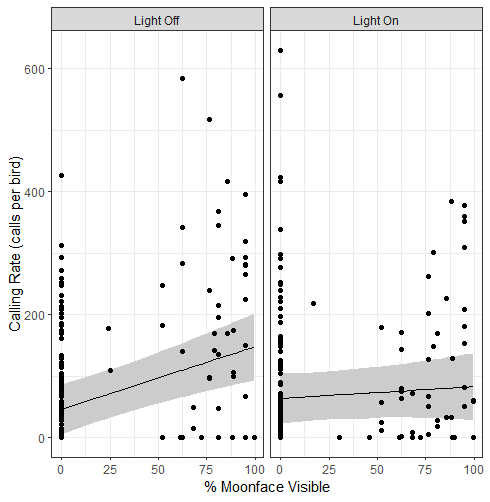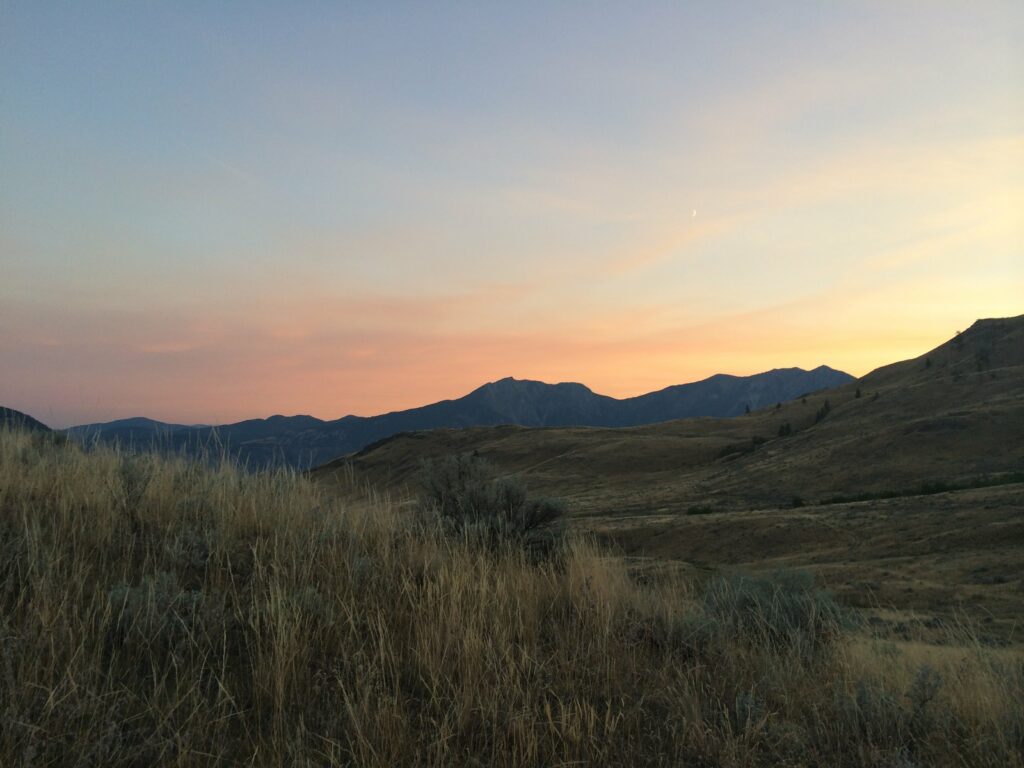Light pollution caused by artificial light at night (or ALAN) is one of many factors of the ever-increasing urbanization of the planet that impact the behaviour and ecology of organisms. The use of artificial light in rural and natural areas in addition to dense urban centres mean its one of the more pervasive symptoms of urbanization and can alter natural environments even quite far from cities. However, the ecological consequences of ALAN on the behaviour of organisms is not well understood, particularly with nocturnal organisms.
Localized ALAN (such as that created by a streetlight or illuminated sign) changes the landscape by creating pockets of darkness and light in an otherwise dark environment. This patchwork environment can influence how an organism forages and how it communicates, with both activities now having an increased risk of predation due to these bright patches in previously dark environments.
Nocturnal birds such as nightjars that typically forage and sing at night, are thought to be especially strongly influenced by ALAN, partially because many of their behavioural cues come from natural exposure to moonlight. Nightjars in particular are heavily influenced by moonlight, with birds singing and being much more active on nights with a full moon than those without. How these light-associated behaviours are influenced by artificial light in nocturnal birds is not well known and is something we aimed to investigate with our study on Common Poorwills.
Common Poorwills (Phaelaenoptilus nuttalli (hereafter poorwills)) are a loud but cryptic species of nightjar found in the rocky valleys and arid lands of Western North America. Like other nightjars, poorwills are visual hunters, often perched on a low branch or on the ground and sallying up to catch night-flying beetles and moths. Because they rely on vision to hunt, poorwills are constrained by the amount of ambient light in their environment and typically forage more on moonlit than dark nights. Male poorwills are also very territorial and advertise their territory by repeating a loud poor-will-ip over and over again, and on nights when the moon is full, these calls can be heard all night long. We chose to study poorwills because they are so strongly affected by moonlight for both foraging and territorial behaviour and so we hypothesized that artificial light would have a similar effect.
To test our hypothesis, we erected artificial light stations along routes in the South Okanagan, British Columbia. These light stations provided a wide radius of illumination and were turned on and off on different nights. We conducted point count surveys at each light station, counting both the number of poorwills and the number of individual calls heard during each 15-minute survey. We also took note of the amount of lunar illumination each station received during our survey.
After analysing our data, we were surprised to find a strong negative correlation between the interaction between moonlight and artificial light on calling rate. That means that when the moon was full and the artificial light was on, poorwills called significantly less than in all other conditions (see figure below). The artificial light alone did not have any significant effect. We think that possibly when the moon is full and the light is on, the area is just too bright and the poorwills call less because of the increased risk of predation they may experience under these conditions. Unfortunately, we did not observe any predation events during our surveys so it’s difficult to assess the impact of predation risk on their behaviour.
We believe that it is particularly important, especially when studying nocturnal birds, to consider the effects of moonlight in all studies of ALAN because moonlight represents the natural light that birds experience at night, so we must have this baseline with which to compare the effects of artificial light sources.
Paul Preston
PhD Student, Queen’s University
The results of this study were recently published in the Journal of Field Ornithology:
Preston, P. J., and R. M. Brigham. 2023. Influence of localized artificial light on calling activity of Common Poorwill (Phalaenoptilus nuttallii). Journal of Field Ornithology 94(3):16. https://doi.org/10.5751/JFO-00348-940316.
Header photo: Common Poorwills (Phaelaenoptilus nuttalli) by Paul Preston.




